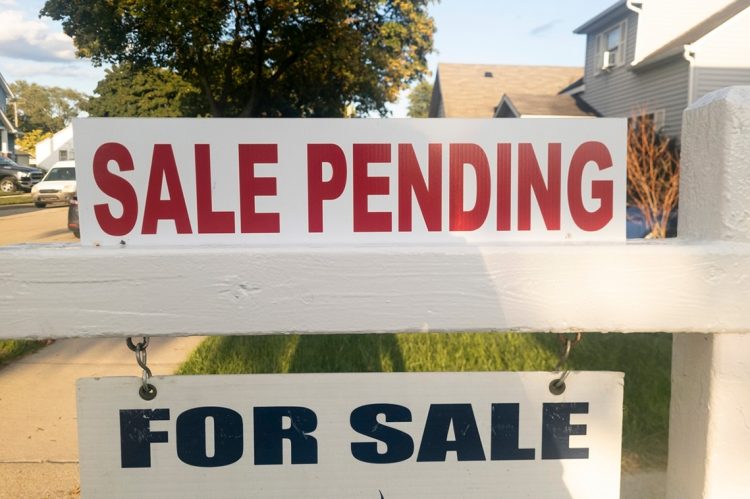A final-hour dip in mortgage rates at the end of 2022 proved to be a boon for homebuying activity at the start of the new year. According to new data from the National Association of REALTORS® (NAR), pending home sales significantly increased in January.
NAR’s Pending Home Sales Index (PHSI), a forward-looking indicator of home sales based on contract signings, increased by 8.1% to 82.5 last month. This marks the second-consecutive month of rising contract signings after several months of a cold streak.
Annually, contract signings dipped by 24.1%. An index of 100 is equal to the level of contract activity in 2001.
NAR experts largely attribute the monthly increase in pending home sales—admittedly the largest jump since mid-2020—to buyers capitalizing on the moderating mortgage environment.
Looking ahead, NAR expects a steady decline in mortgage rates with the 30-year fixed-rate hitting 6.1% at the end of 2023 and 5.4% next year. Despite the improvements in affordability, existing-home sales are still expected to drop by 11.1% in 2023 before rebounding in 2024, according to NAR experts.
NAR suggests that sales could jump as high as 17.7% in 2024.

Monthly contract signings increased in all regions.
Regional Breakdown:
Northeast
+6% MoM — Now 68.7 PHSI
-19.8% YoY
Midwest
+7.9% MoM — 83.3 PHSI
-21.1% YoY
South
+8.3% MoM — 99.2 PHSI
-24.7% YoY
West
+10.1% MoM — 66.2 PHSI
-29.3% YoY
The takeaway:
“Buyers responded to better affordability from falling mortgage rates in December and January,” said NAR Chief Economist Lawrence Yun.
“Home sales activity looks to be bottoming out in the first quarter of this year, before incremental improvements will occur. But an annual gain in home sales will not occur until 2024. Meanwhile, home prices will be steady in most parts of the country with a minor change in the national median home price.
“An extra bump occurred in the West region because of lower home prices, while gains in the South were due to stronger job growth in that region,” Yun concluded.
“New pending sales were up for the second month in a row in January as falling mortgage rates drew some buyers back into the market,” said Bright MLS Chief Economist Dr. Lisa Sturtevant. “NAR’s Pending Home Sales Index showed strong monthly increases in pending sales activity across all regions of the country, although buyer activity is still far below last year’s levels.
“The new pending sales data for January provides further evidence that the housing market may have bottomed out at the end of last year. However, it likely won’t be a V-shaped rebound. Instead, expect a bumpy road on the way to a more normal housing market in 2023.
“There is still a lot of uncertainty in the market. Mortgage rates have been trending higher over the past few weeks and the Federal Reserve has indicated it will raise rates at least two, and possibly three, more times this year, which could send mortgage rates higher still. Mortgage applications were down in February as rates hit their highest levels since late November. Weekly data on housing market activity shows a pullback in buyer interest over the past three weeks.
“In the current housing market, it is a battle between the rational, financial calculus of homebuying and the instinctive, psychological side. The head versus the heart. For some buyers, higher mortgage rates simply means buying a home is out of the question unless home prices fall. For others, higher mortgage rates will be a hurdle, but ultimately will not keep them from getting back into the market after sitting on the sidelines for months,” Sturtevant concluded.
“Contract signings continued to thaw in January, increasing 8.1% relative to December 2022, the largest monthly increase since June 2020,” said realtor.com® Economic Data Analyst Hannah Jones. “However, pending home sales were still down 24.1% compared to last January. By the end of January, the rate on a 30-year fixed-rate mortgage was 6.13%, the lowest level since mid-September 2022. However, home prices remained 8.1% higher than the previous year which, coupled with mortgage rates up more than 250 basis points in the same time period, meant that buyers were still positioned to pay much more for a home than a year prior.
“Despite ongoing affordability constraints, contract signings picked up in all regions, led by a 10.1% month-over-month increase in the West. Mortgage rates took a breath in December and January before resuming their climb in February, reaching 6.5%, the highest level of the new year. At the current rate, the monthly payment on a median-priced home would be 45.1% ($630) higher than at the same time last year. This is a $100 improvement over January, but many buyers are still holding off, waiting to see if prices or rates give a bit before getting into the market.
“Last year’s persistent increase in both mortgage rates and home prices pushed many would-be home purchasers out of the market, resulting in decreased seller and builder activity, which limited options for buyers still in the market. New listings were at the lowest level in the last six years in January as sellers stayed on the sidelines, waiting to see buyers return, before placing their homes for sale. However, the first month of the year brought glimmers of hope as year-over-year declines in both existing and new home sales slowed, and buyer sentiment improved slightly. The spring season typically brings increased buyer demand and therefore competition as the home-buying season kicks off. This spring is expected to be less active than the last couple of years as affordability challenges persist,” Jones concluded.












